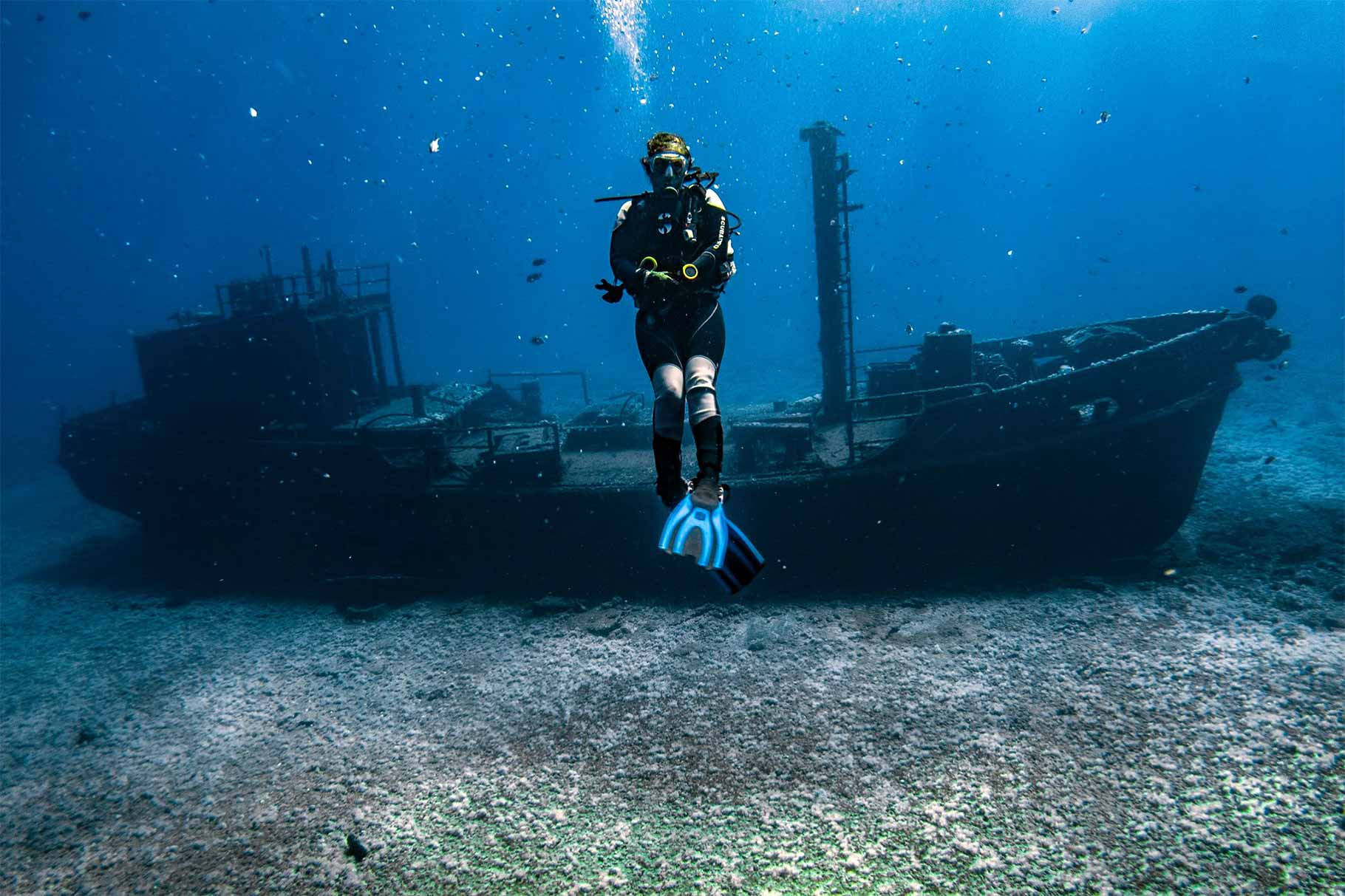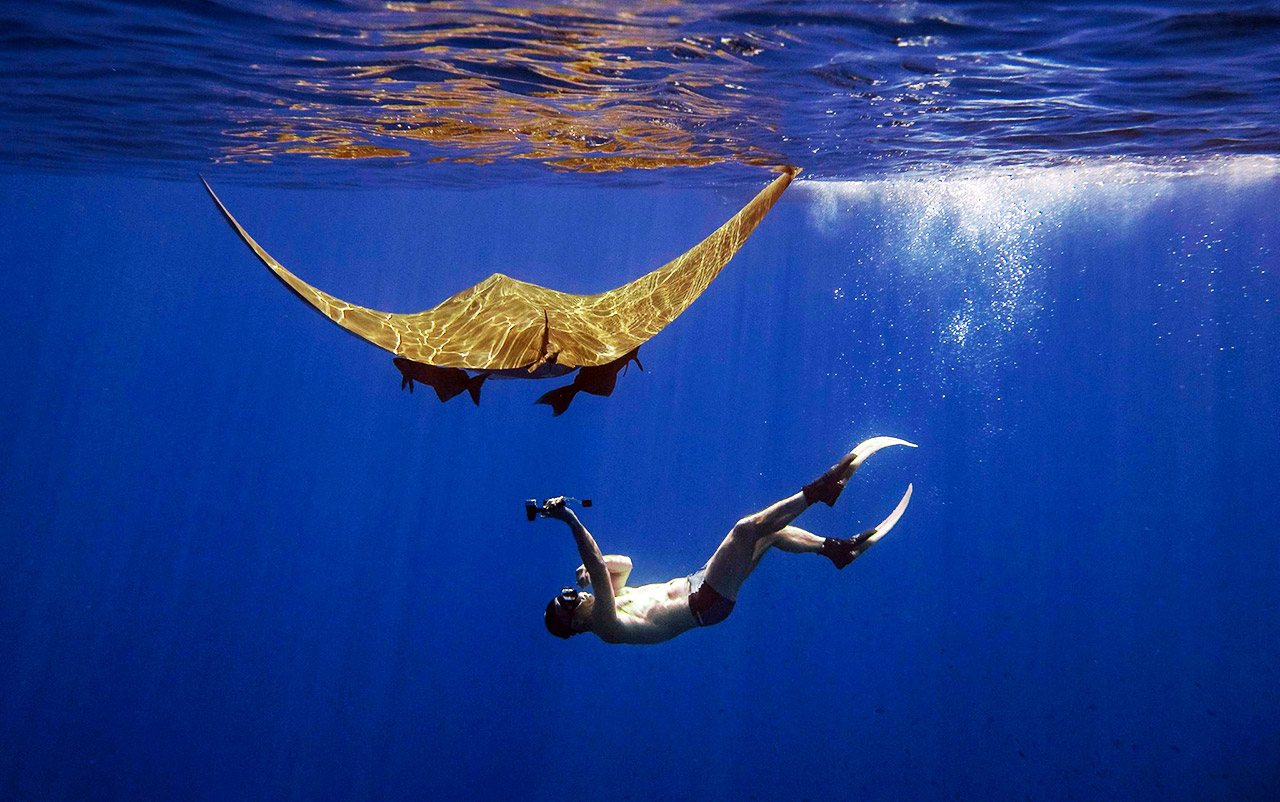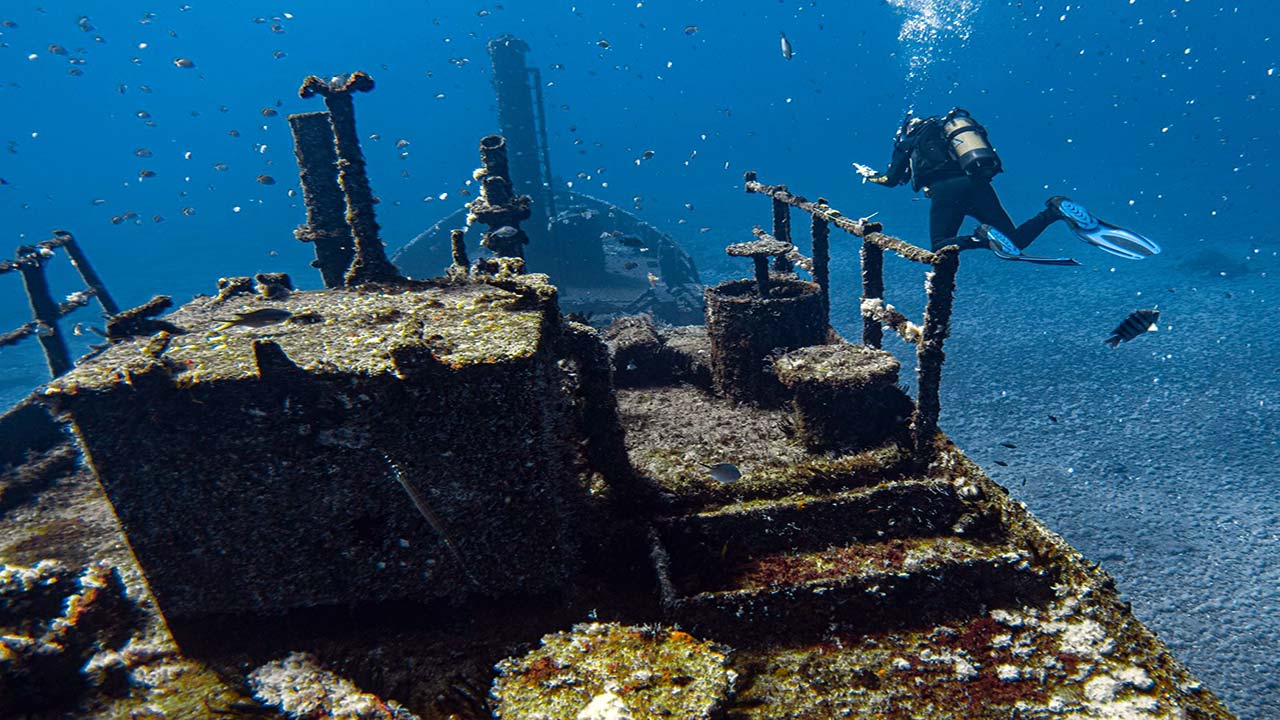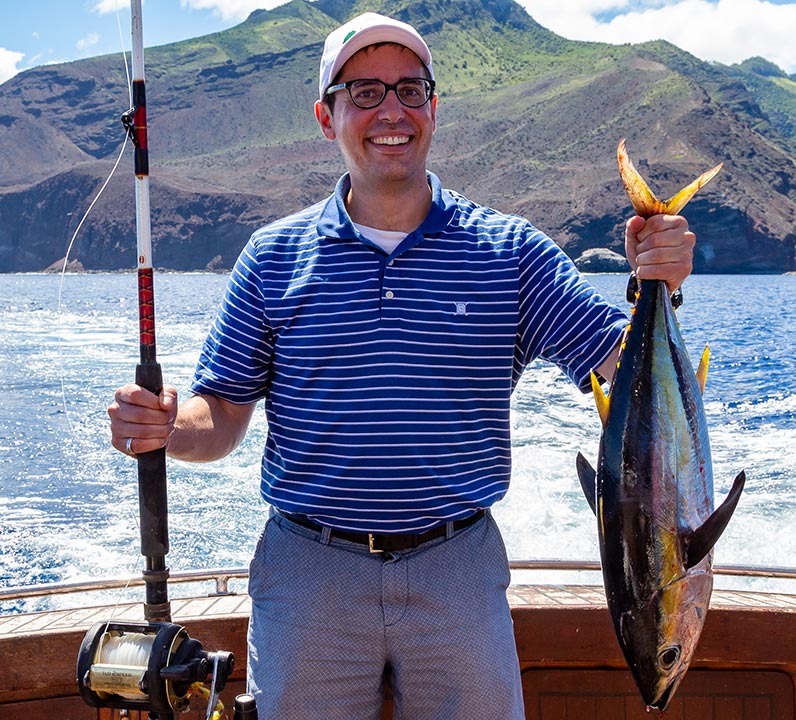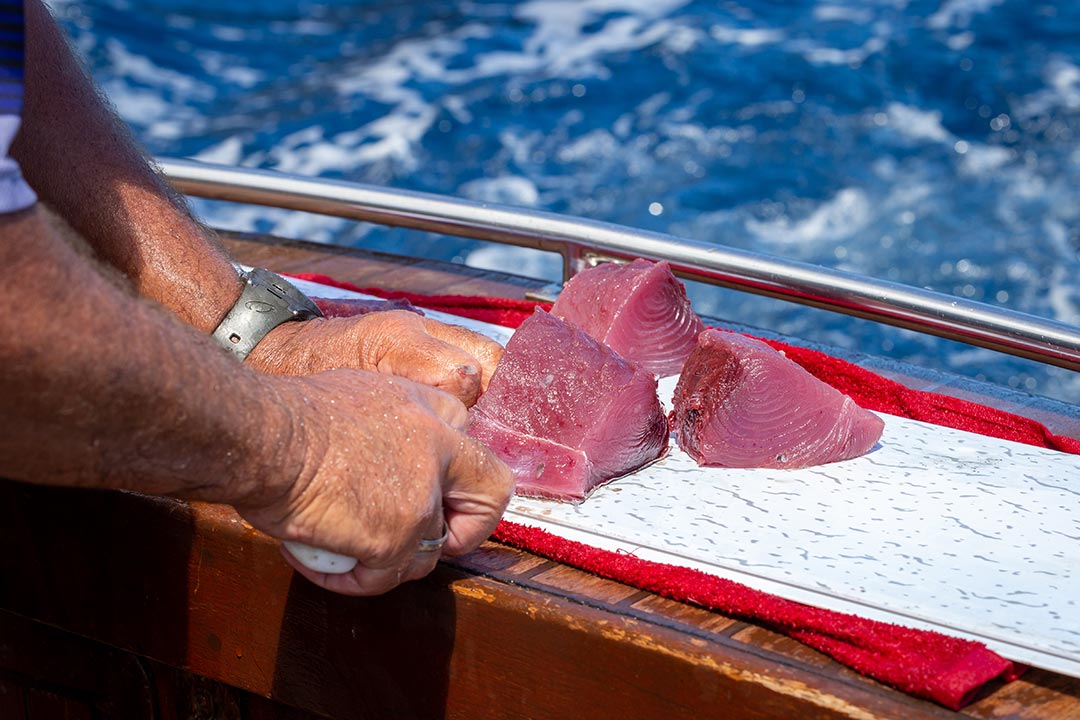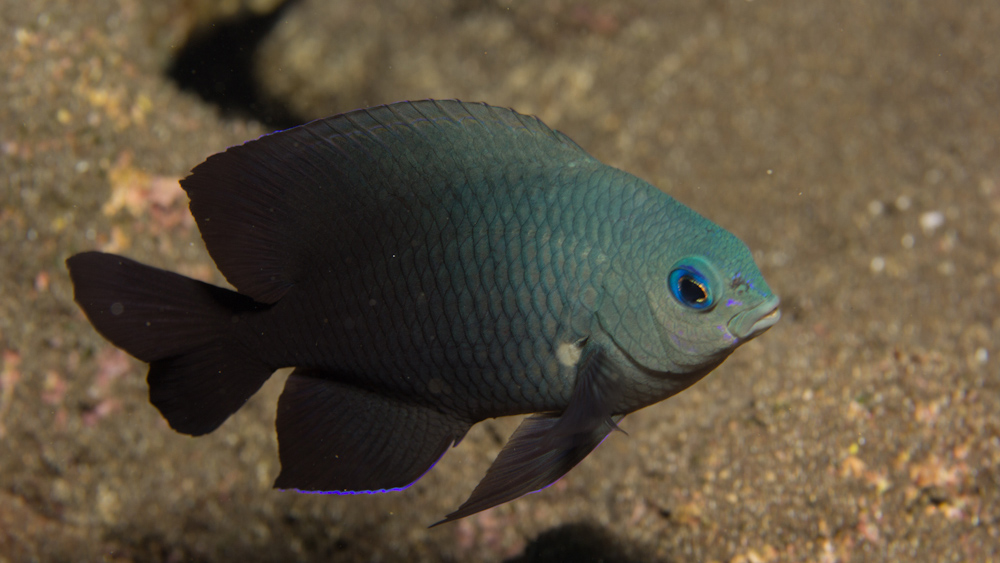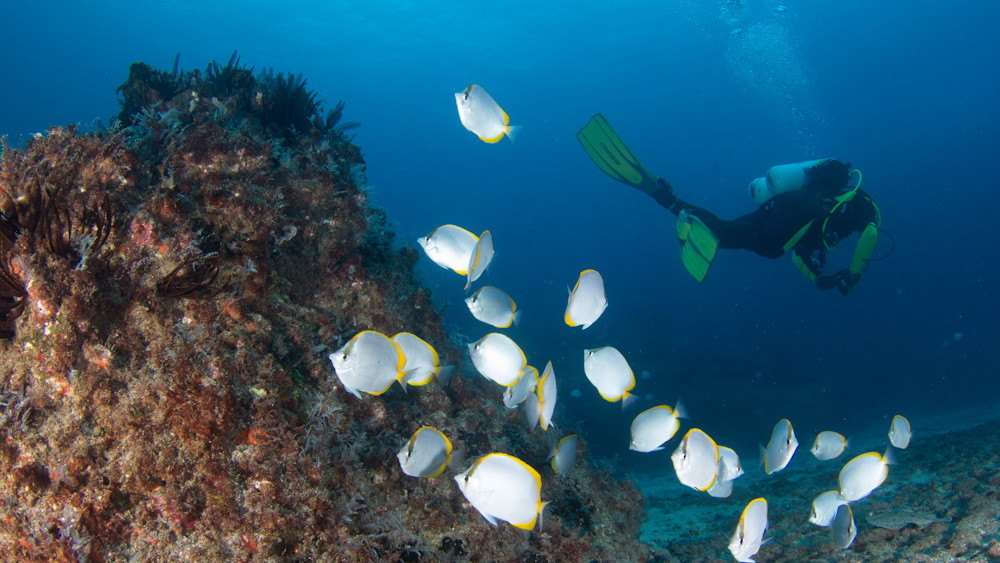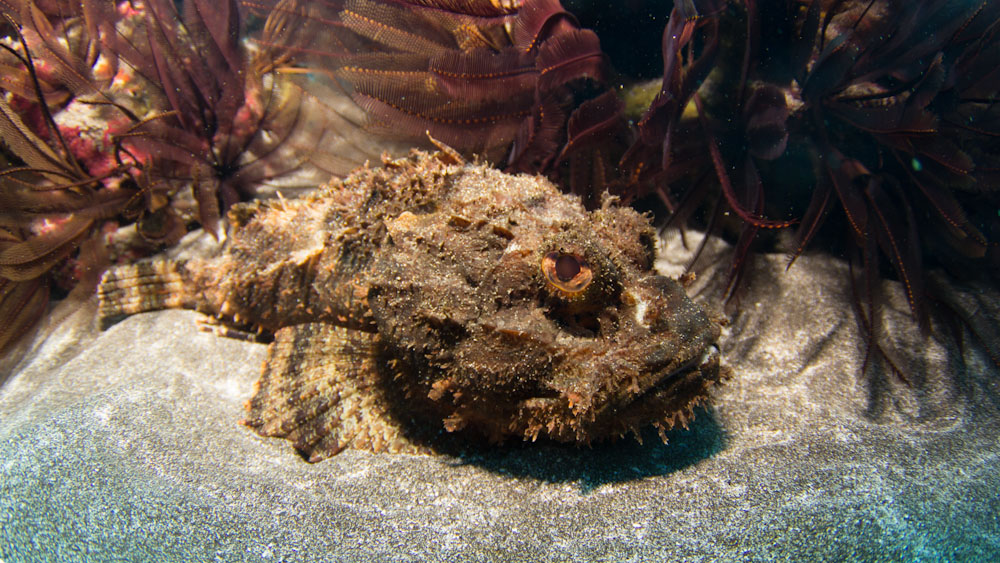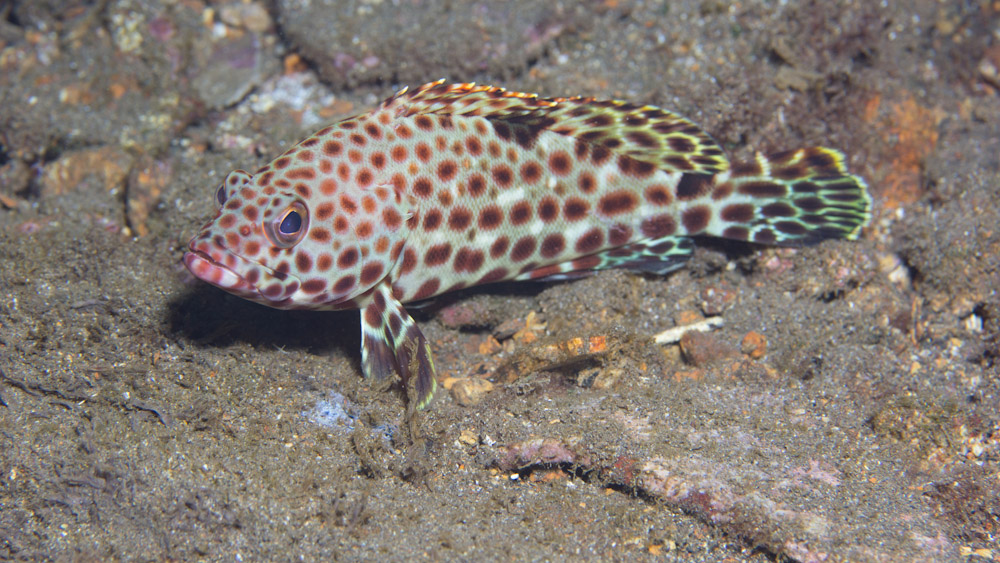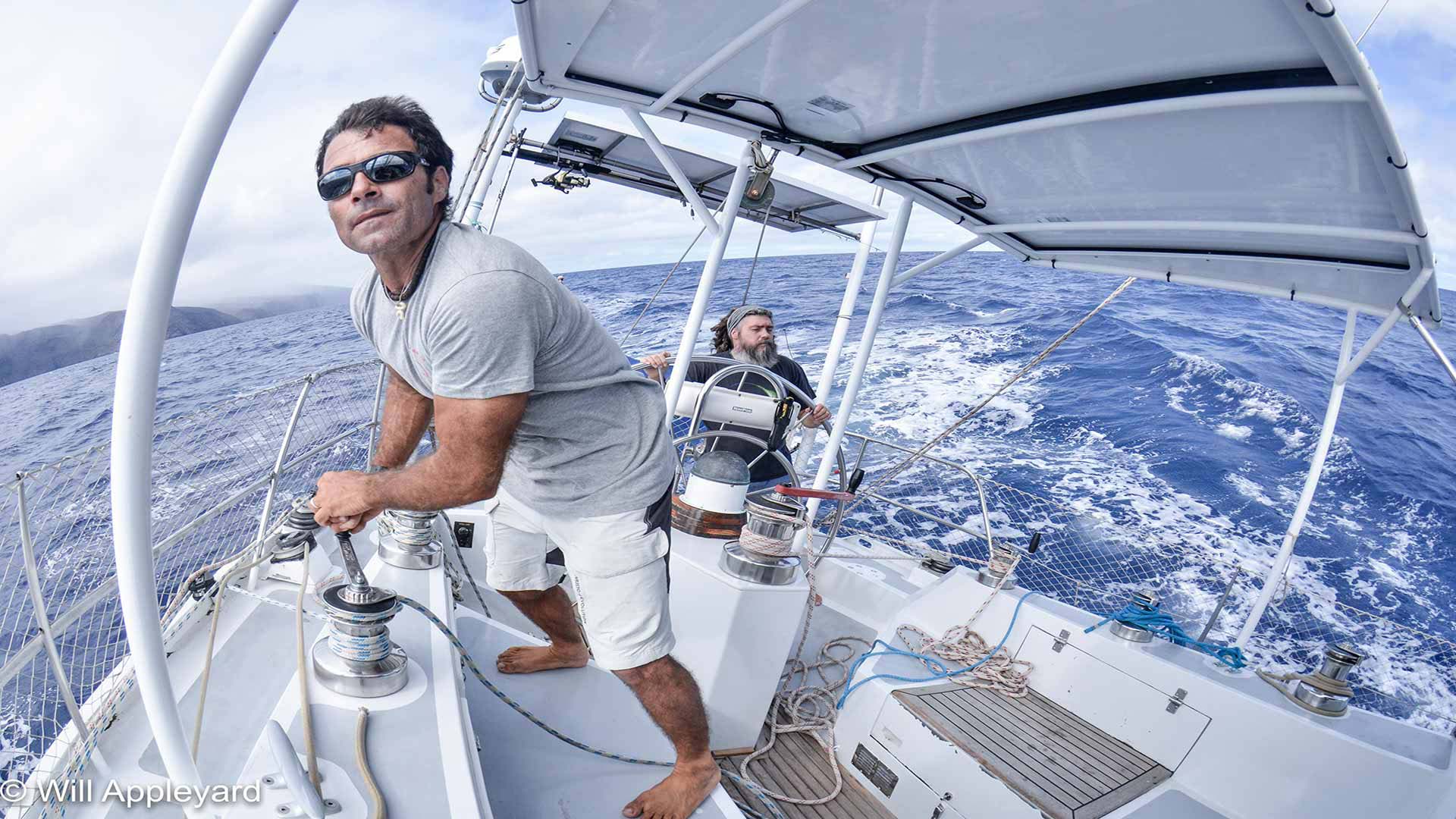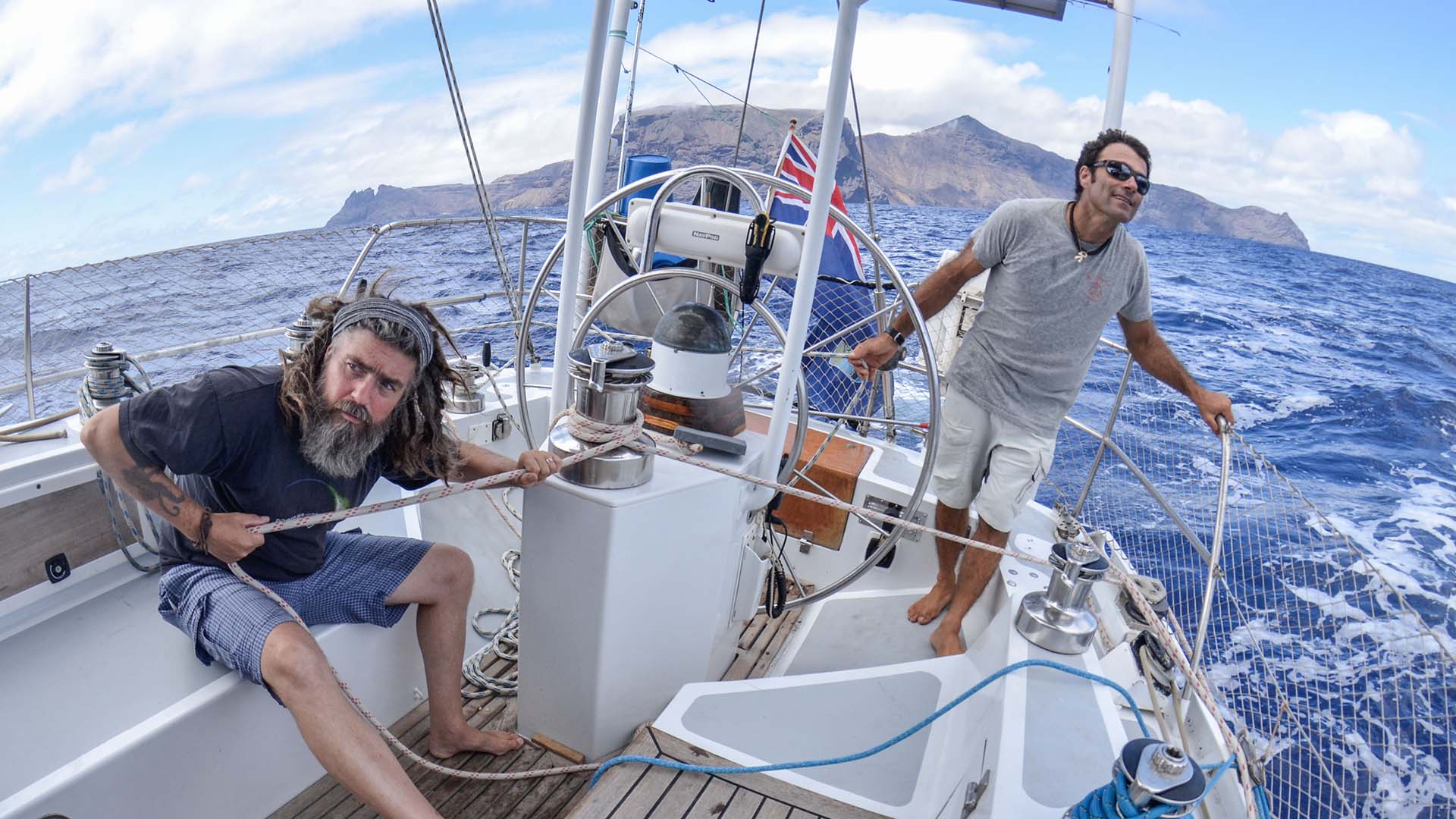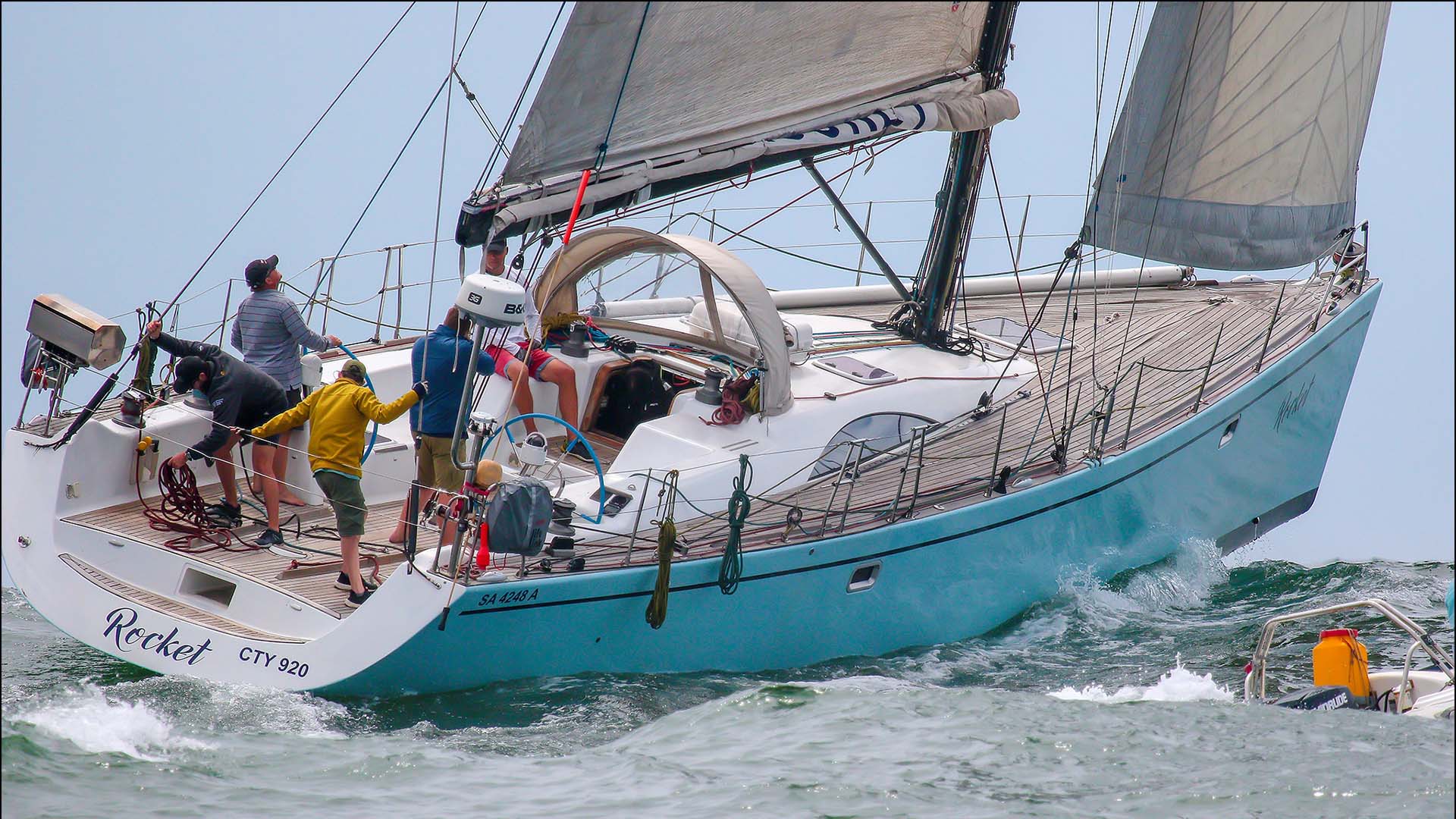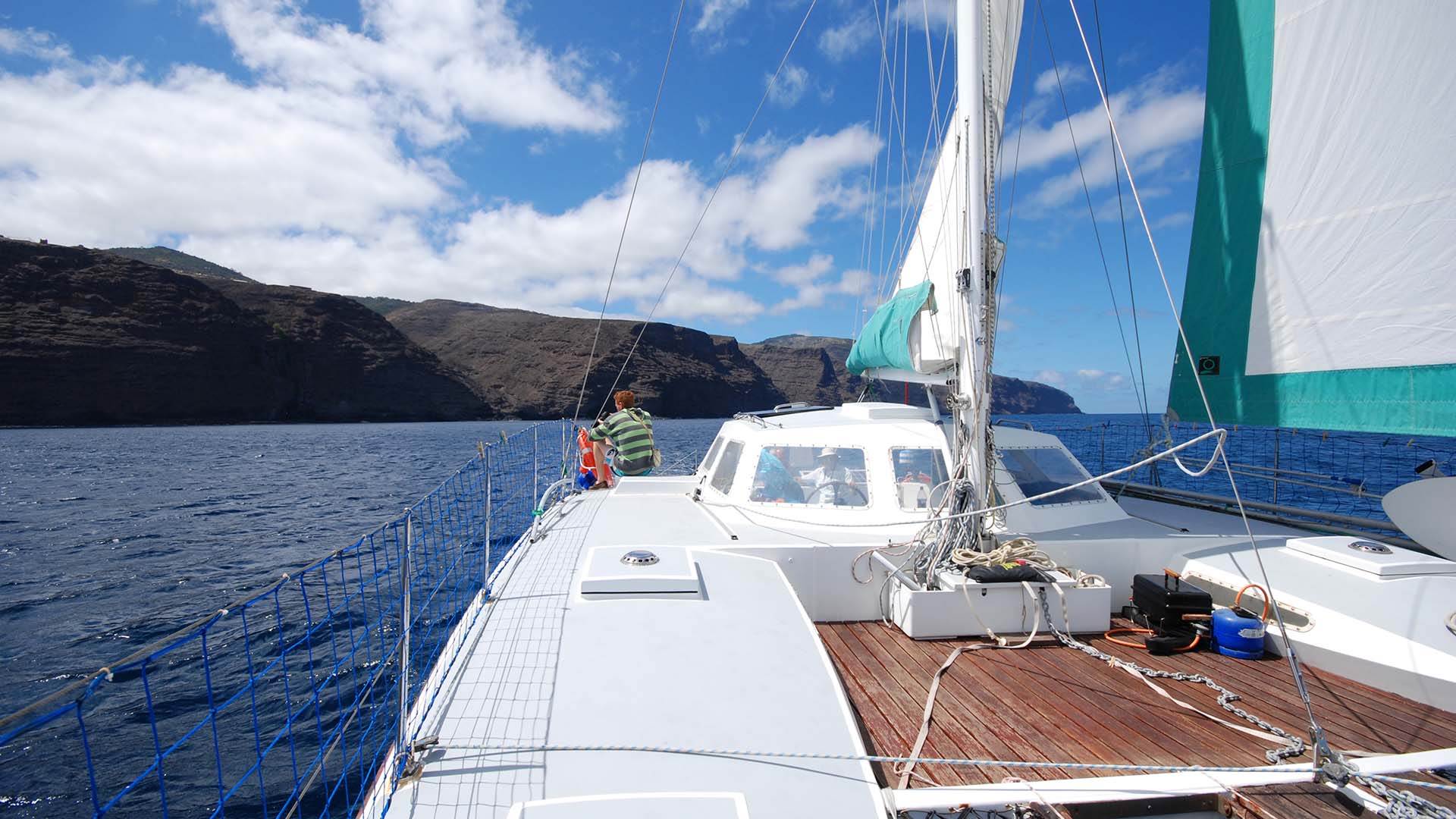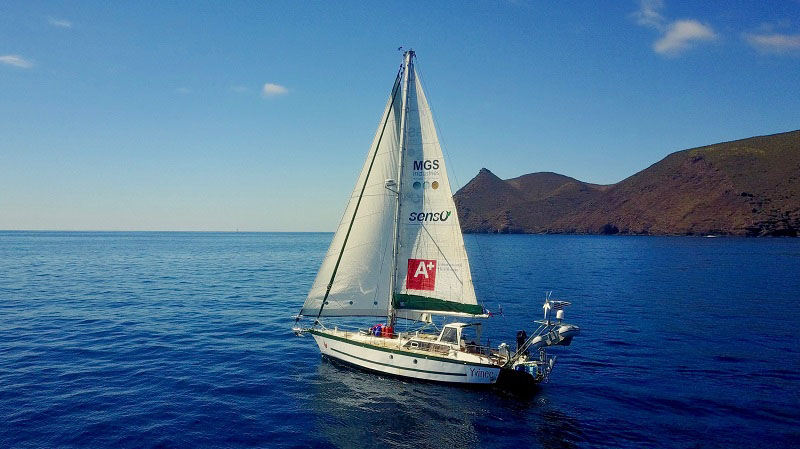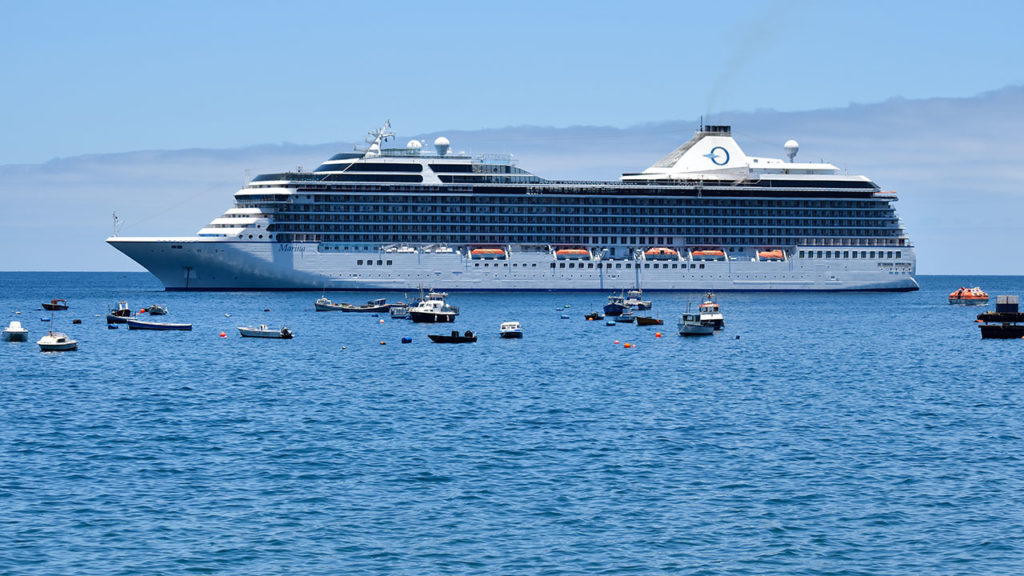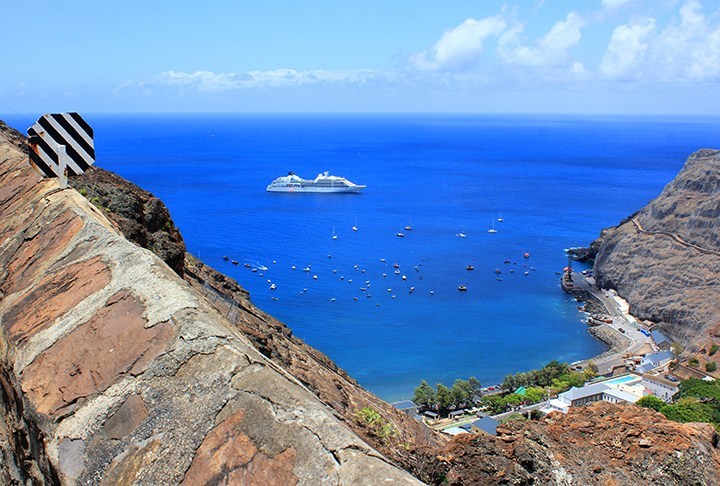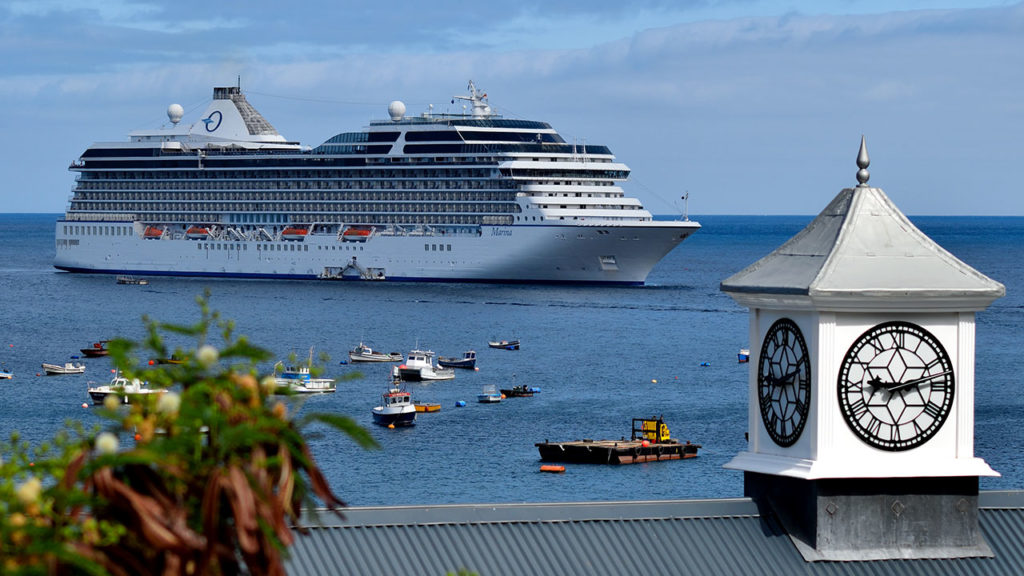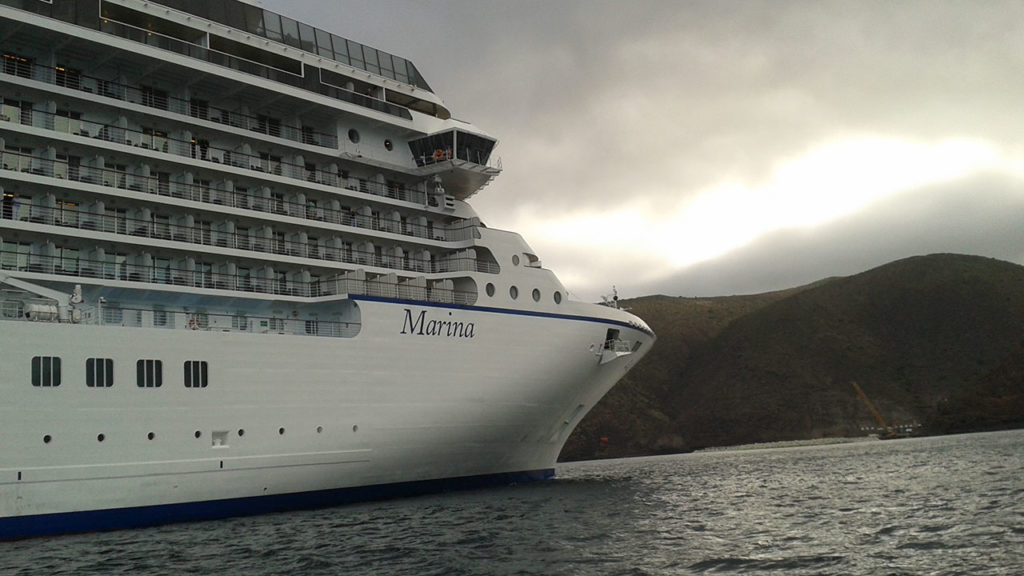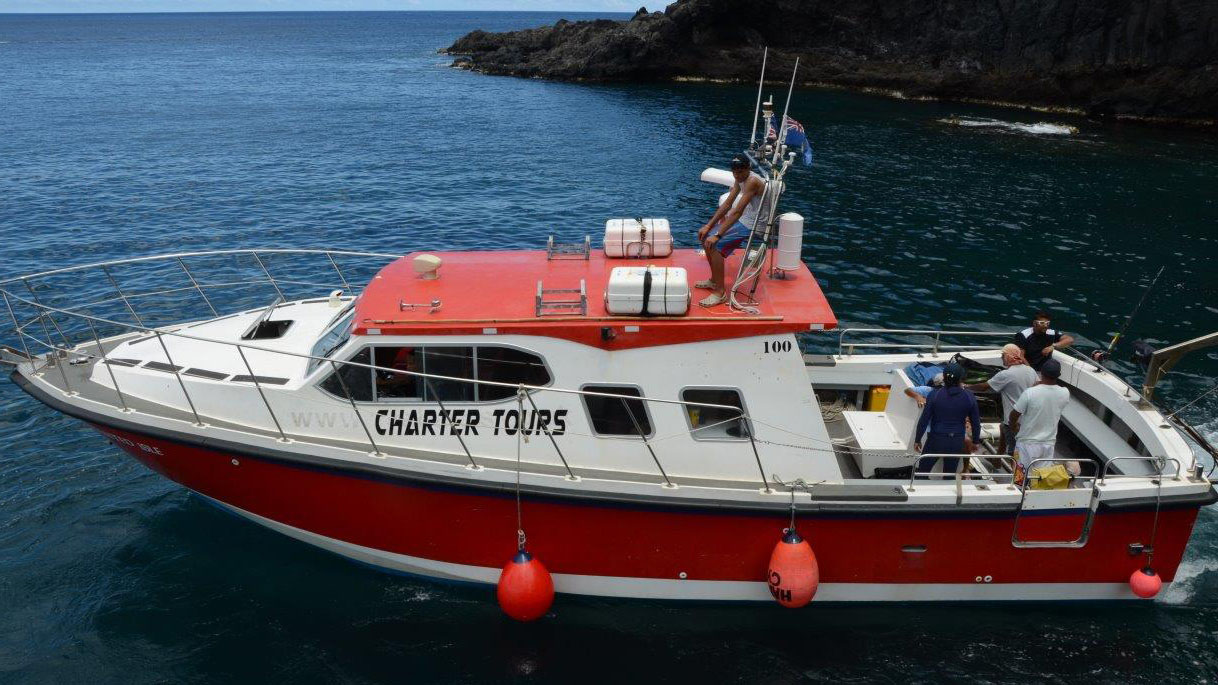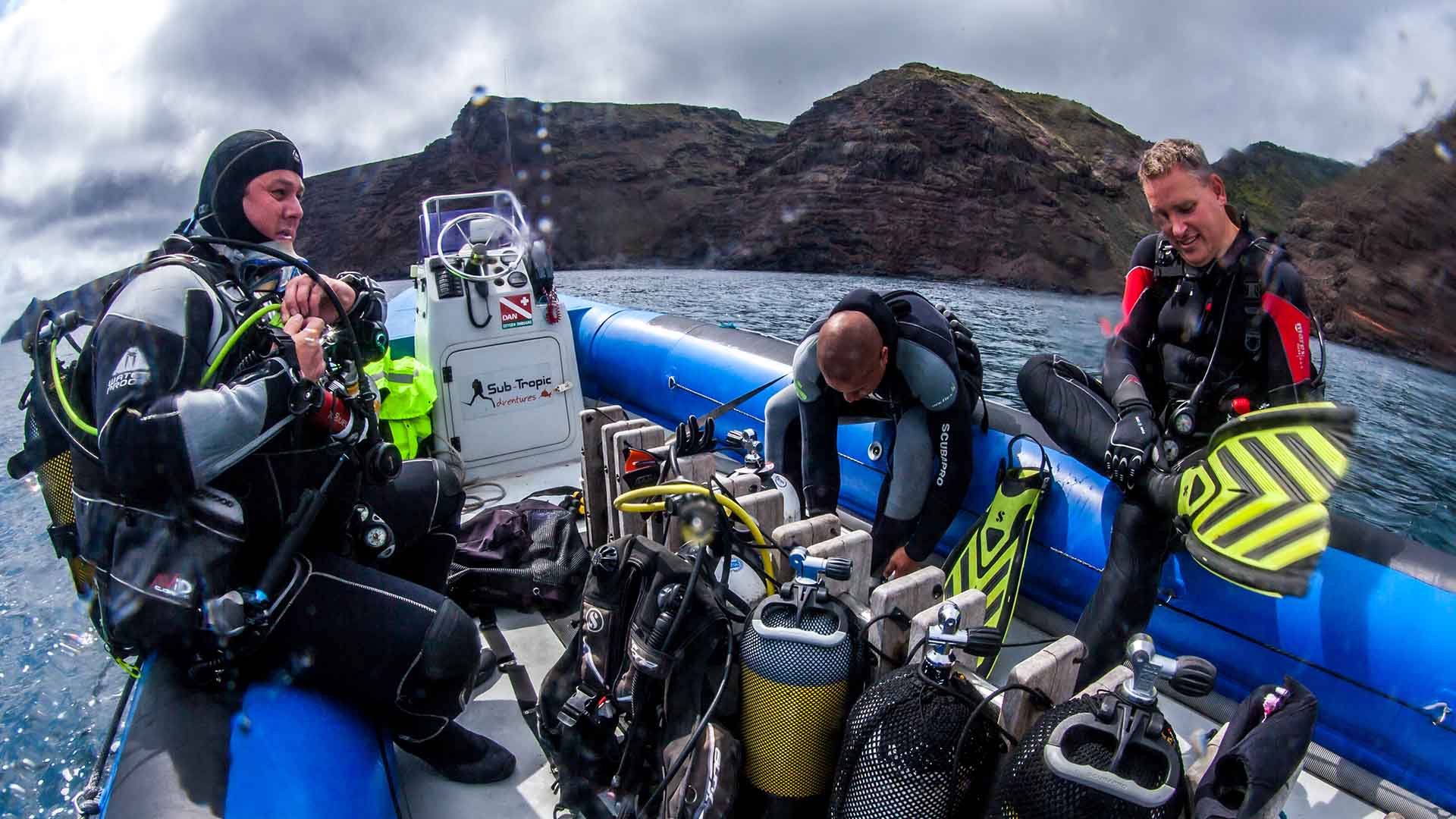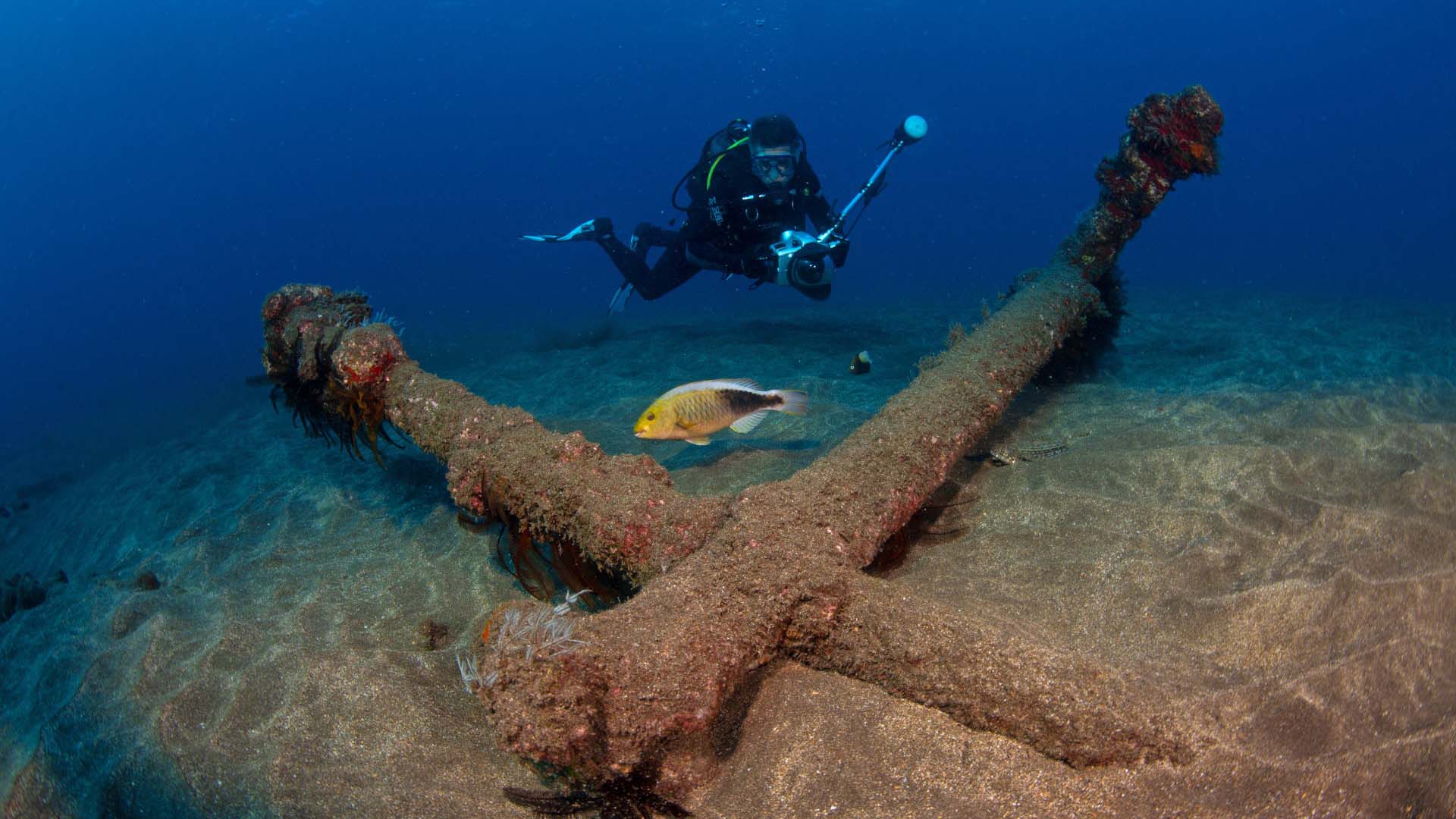
Clear, warm waters, wrecks and fascinating marine life make St Helena Island an enticing snorkelling and scuba diving destination. Dive site habitats vary from rocky reefs with caves and areas of boulders to cobbles and sand, all teeming with marine life and all within easy reach of the wharf in Jamestown. The wrecks dotted around the coast present popular dive and snorkelling sites.
Sea temperatures vary from 66 to 75°F (19 to 25°C) and visibility can range from 16 to 130 feet (5 to 40m) with peak visibility being from December to May. Dives vary between 40 and 130 feet (5 to 30m+) and offer a range of diving opportunities. There are a number of local laws for divers to abide by, including no wreck penetration and rules.
Select a Marine Adventure
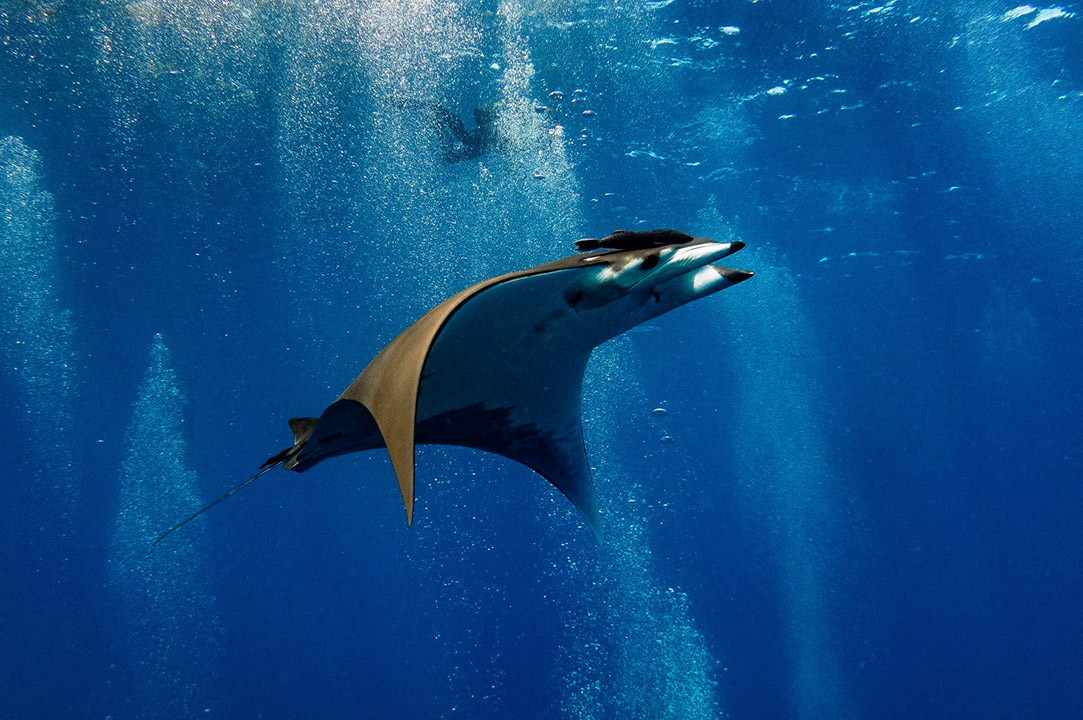
Devil Ray In St Helena Water
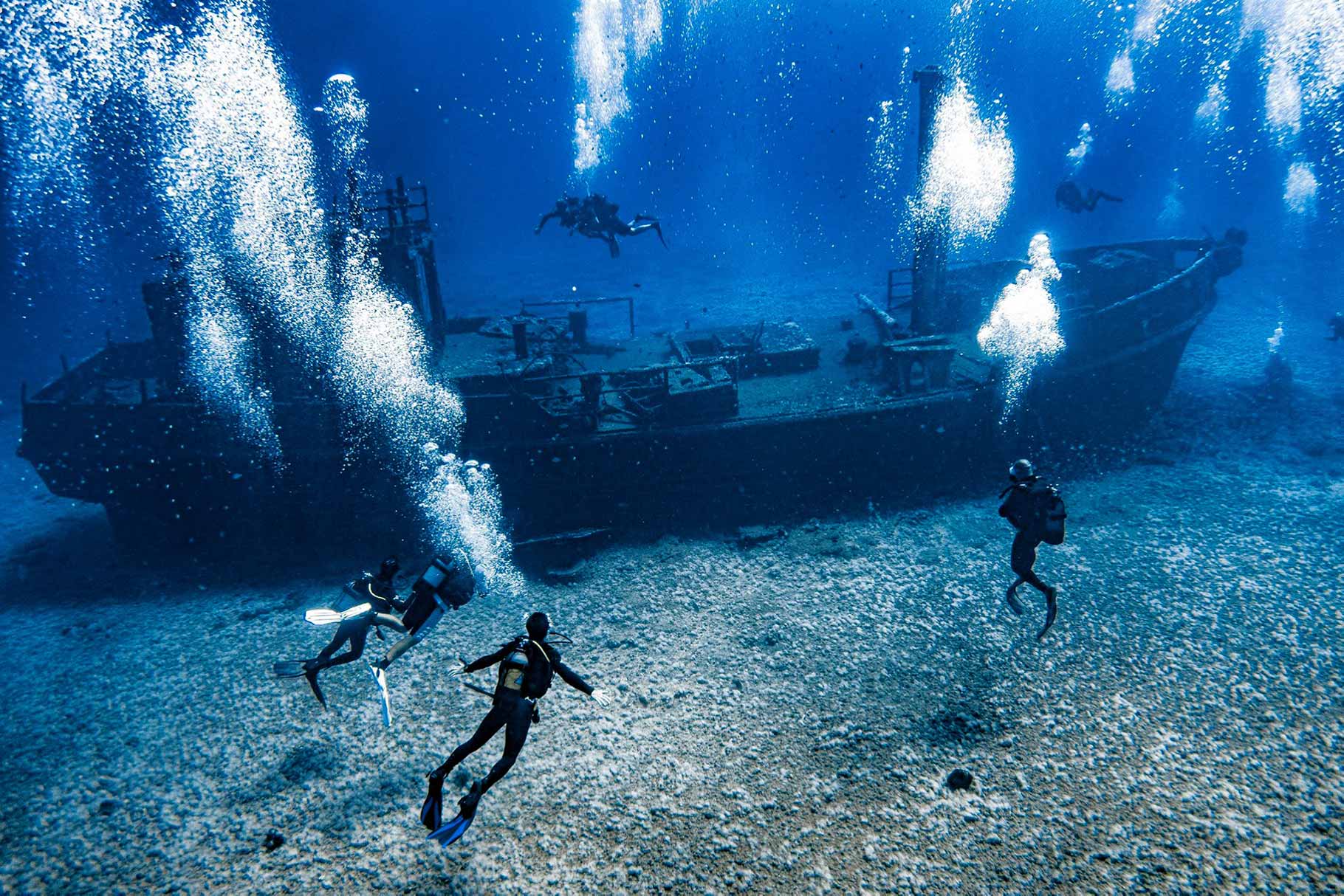
Sunday Dive
Diving On St Helena Island
From clear, warm waters to wrecks and fascinating marine life, it is easy to fall in love with the ocean of St Helena Island. In fact, diving and snorkelling is also a popular pastime activity for many islanders.
Sea temperatures varies from 66 to 75°F (19 to 25°C) and visibility can range from 16 to 130 feet (5 to 40m), with peak visibility being from December to May. Dives vary between 40 and 130 feet (5 to30m+).
Snorkelers and divers can encounter a vast array of marine and endemic life, including the St Helena Butterfly Fish and the Deepwater Jack . Green and Hawksbill Turtles are also often seen and visits from devil rays are not uncommon. Located along James Bay and Lemon Valley are popular snorkelling nature trails to explore.
Popular dive sites boast a range of mixed habitats, including rocky reefs with caves and areas of boulders, cobbles and sand.
Dive into the past and explore the numerous shipwrecks found on the leeward side of the island. Telling tales of treasure, tragedy and loss; each wreck battling against mother nature to preserve their memory from the deep below.
Whether an advanced diver or just a beginner, St Helena Island offers diving opportunities for all levels. PADI diving courses are available from two qualified local dive operators.
If you’re planning to scuba dive on St Helena visitors must ensure to bring proof of certification and a log book. There are also a number of local laws for divers to abide by, including no wreck infiltration to enable the preservation of our magnificent pieces of maritime history.
Explore the wrecks of St Helena Island
Beneath the crystal waters of St Helena Island, lay 8 magnificent pieces of maritime history, battling against mother nature to preserve their memory from the deep below.
Entwined in these wrecks are tales of treasure, tragedy and loss; a fascinating window into the past and ill wind fates that over centuries, paved way for habitats and myriads of aquatic species which have emerged in them.
Bedgellet
The Bedgellet was bought to salvage the Papanui but broke its moorings during a storm, causing damage to other boats in the harbour along with itself. It was sunk in 2001 as an artificial reef, not far from Long Ledge, meaning it can be enjoyed by scuba divers and snorkellers alike.
Frontier
A drug running fishing trawler was confiscated and sunk in 1994. The Frontier has become a popular wreck dive for advanced divers.
Papanui
Over the years, the Papanui has attracted an abundance of marine life with the many endemics and other species of fish that can be found here is testament to the island’s strict conservation efforts. The Papanui lies in approximately 20 to 40 feet (6 to 12m) of water. The stern post protrudes above the surface occasionally as the tides move in and out. This is one of the most popular dive sites around St Helena Island for both the beginner and the experienced diver.
Spangereid
A coal ship that caught fire and sunk in 1920.
Darkdale
A royal fleet auxiliary tanker sunk by a German U-boat in 1941. The Darkdale is a war grave and displays the Union Jack on the stern. An early morning dive is the best time to visit the Darkdale.
Portzic
A fishing vessel, old and unrepairable, was sunk in 2008 as an artificial reef.
Witte Leeuw
A cargo ship that was sunk in 1613, lies approximately 115 feet (35m) from the surface. Jacques Cousteau dived this wreck many times when he visited in the 1970’s.
Atlantic Rose
A boat first used for cargo and then later converted into a fishing vessel until it broke its moorings and sank.
Whale Sharks
Whale Sharks (Rhincodon typus) are the largest fish found in the world’s oceans but are also known as the ‘gentle giants’ of the sea.
The largest recorded Whale Shark measured 12.65m in length, although unconfirmed reports suggest they may grow as long as 14m or more, and weigh more than a staggering 21 tonnes. Despite its size, whale sharks are filter feeders, feasting mostly on blooms of microscopic plankton and occasionally, small fish.
Whale Sharks visit St Helena Island between December and March every year, with more than 30 different individuals sighted during a single day, although not in the same location. St Helena Island is the only known location in the world where adult male and female whale sharks congregate in equal numbers, presumably to mate.
Swimming with these ocean giants has been described by many as a life changing experience. Those wishing to to swim with them, will need to be accompanied by an accredited tour operator.
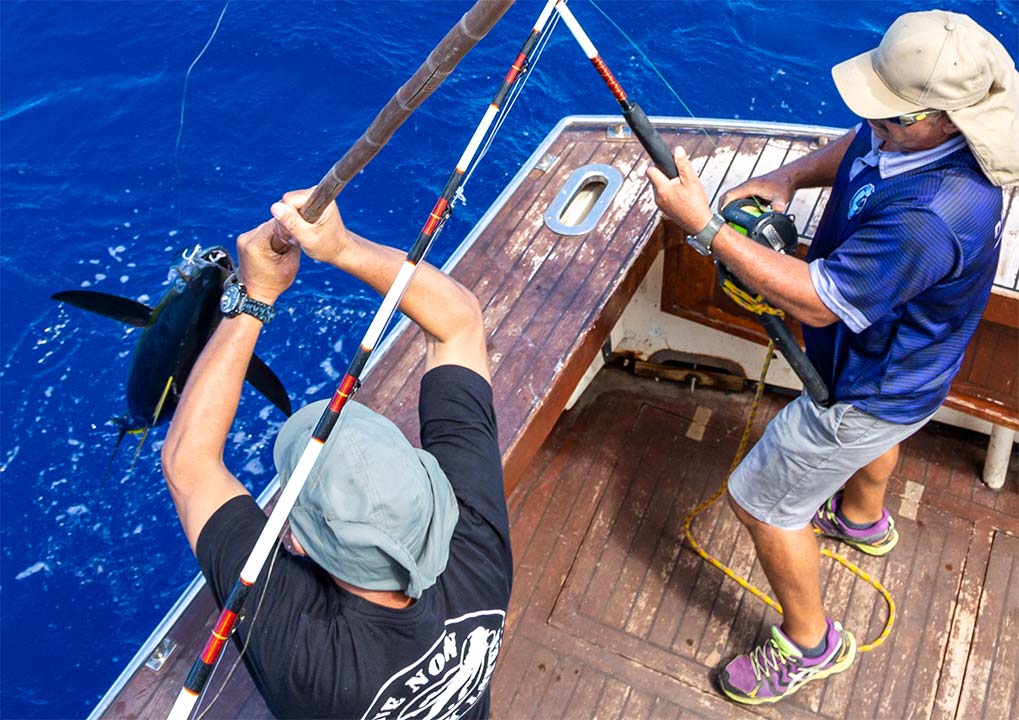
Sport fishing on St Helena Island
FISHING
Fishing is enjoyed as a local past-time on St Helena Island, from a quiet day casting off the rocky shoreline to the thrill of deep-water sports fishing.
If sports fishing on St Helena Island is what you are looking for, the cool surrounding waters provide the fishing enthusiast with a wide range of popular big game fish, such as Blue and Black Marlin, Tuna, Wahoo, Dorado and Barracuda. If boat fishing isn’t your thing, then the rocky coast line is also easily accessible in Jamestown and Rupert’s providing you with a relaxing and fun day, catching Grouper, Quavalley, Rainbow Runners, Atlantic Jack and also the endemic Bullseye.
Fishing is an important resource to the island for fresh produce. St Helena Island’s exclusive economic zone (EEZ) extends to 200 miles offshore, and at present remains largely unexplored and unexploited.
Marine Life
Whether exploring beneath the ocean’s surface or cruising above the waves, you’re sure to enjoy St Helena Island’s rich marine life.
Take a cruise and enjoy a day at sea, marvelling the habitants of our ocean up close.
Admire the playful Bottlenose and Pantropical Dolphins all year round, and on the rare occasion witness sights of the Rough-toothed Dolphins. Humpback Whales can be spotted off the coast of St Helena Island between June-December. From June individual adults are seen, with sightings of mother and a single calf being reported from July onwards. This suggests that Humpback Whales migrates to St Helena Island during the winter season to give birth to their calves. Over the years it has been known that you can also see sightings of the mother and her calf passing the Jamestown shores.
St Helena Island’s waters is also proudly home to nearly 780 marine species that have so far been recorded in St Helena’s waters including 72 species of algae, 223 Mollusca, 44 Echinodermata, 173 Chordata (including 10 Ascidacea), 41 Cnidaria, 33 Bryozoa, 69 Formanifera, 64 Crustacea, 24 Porifera, 31 Annelida and 5 Plathelminthes, of these at least 50 are endemic to St Helena Island.
10 fish you'll only find on st helena island
Bastard Cavalley Pilot (Stegastes Sanctaehelenae)
Bastard Fivefinger (Chromis Sanctaehelenae)
Deepwater Jack (Pontinus Nigropunctatus)
Deepwater Gurnard (Scorpaena Mellissii)
Deepwater Greenfish (Holanthias Fronticinctus)
Silver Eel (Ariosoma Mellissii)
Greenfish (Thalassoma Sanctaehelenae)
Skulpin (Physiculus Helenaenis)
Springer’s Blenny (Scartella Springeri)
St Helena Dragonet (Callionymus Santaehelenae)
Sailing St Helena Island
Powered by our natural resource, quiet sailing in St Helena Island is one of the most peaceful and eco-friendly leisure activities. Be transported through untouched nature and experience the island from the Atlantic with wildlife encounters and exceptionally beautiful scenic views of the coast and the anticipated green flash at sundown.
Visiting St Helena by Yacht
St Helena welcomes visiting yachts. There’s a growing interest in yachts seeking safe havens in new and unspoilt destinations. St Helena is conveniently positioned for passing sea traffic as it sits in the middle of West Africa and South America.
St Helena has only one harbour called James Bay which now benefits from a new field of robust mooring buoys. The rest of the coast is towering rocky cliffs, backed by lush green slopes, climbing up to the highest spot on the island, Diana’s Peak, at 823 metres.
St Helena’s popularity as a port of call for passenger liners has now been taken over by sailing yachts, a large number of which stop here every year. A warm welcome awaits the visiting sailor ashore in Jamestown, the island’s main settlement and only harbour.
More information can be found on our arriving by sea page
Visiting St Helena On a Cruise ship
St Helena is ideally located as a midway port on cruises between Cape Town or Walvis Bay, the Falkland Islands and South America and the Caribbean.
Cruising on St Helena dates back to Union Castle days, and since then has remained small-scale, however interest in cruise visits to St Helena is growing. Our cruise ship season starts from October and ends in April.
There is no breakwater in James Bay, all visiting cruise ships drop anchor in the bay and passengers are tendered ashore via the ships lifeboats to the landing steps. A unique experience for all!
More information can be found here on our arriving by sea page.





